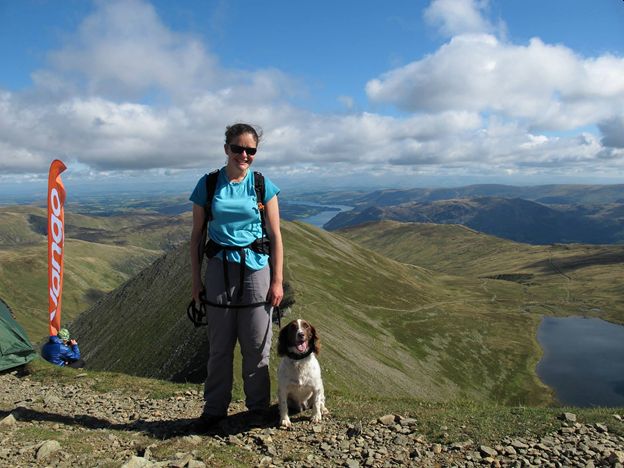What does ecohydrology mean to you?
To me, ecohydrology is the interactions and feedbacks between ecological and hydrological processes, with particular emphasis on geomorphology and biogeochemistry. Within ecohydrology, I am particularly interested in how system structure (such as vegetation distribution and [micro]topography) affects the lateral redistribution of water, nutrients, sediment and seeds around the landscape, which in turn control where vegetation can continue to persist, or where new seeds will germinate.
What are your undergraduate and graduate degrees in?
My undergraduate degree was in Physical Geography at Durham University, UK (which I’ve now returned to!). During this degree I undertook my first independent research in drylands (where most of my work is now focused), on the hydraulic geometry of ephemeral channels in Spain. Following this, I moved to Kings College London where I completed a MSc in Environmental Monitoring, Modelling and Management, which led to a PhD in Physical Geography at Sheffield University, UK.
How did you arrive at working in/thinking about ecohydrology?
I had always been fascinated in tropical forests and I was really sure that I would end up doing research in this area during my MSc, but this wasn’t to be the case, and I ended up back in drylands – this time in New Mexico – where I undertook research on hydrological connectivity in grassland and shrubland at the Jornada Experimental Range. I was really intrigued by this environment, and the widespread vegetation transitions that have occurred over the last century, and I was keen to learn more about how these transitions actually happen. This led to my PhD research on ‘Ecohydrological interactions across a semi-arid grassland to shrubland transition’ which really reinforced the importance of considering both vertical and lateral fluxes of water, nutrients and sediment when thinking about feedbacks between vegetation and hydrology.
What do you see as an important emerging area of ecohydrology?
At the moment I am particularly fascinated about the potential to refine our understanding of the ecohydrology and resulting structure and function of drylands by applying tools from network science. For example, can we identify “critical nodes” in the system where ecohydrological feedbacks increase or decrease the resilience of a given system state? And through identification of these critical nodes and their associated ecohydrological characteristics, can we manipulate/manage them to alter system structure and function to maximize the provision of ecosystem services? Of course, the application of network science tools to ecohydrology extend far beyond drylands, but as a complex system characterized by patchy vegetation, they certainly make an interesting starting point. There’s also a lot of progress to be made in the area of ecohydrological modelling, in order to take into account sufficiently well both the vertical and lateral fluxes of energy, water, nutrients and sediment.
Do you have a favorite ecohydrology paper? Describe/explain.
Although not strictly an ecohydrology paper, Schlesinger’s 1990 paper on “Biological feedbacks in global desertification” was particularly influential for me earlier on in my research career, in terms of thinking about how patterns of vegetation, and soil nutrients arise due to the complex interplay between lateral and vertical ecohydrological processes, which in turn affect the ongoing structure and function of the system.
The paper by Cadenasso et al (2006) on “Dimensions of ecosystem complexity: Heterogeneity, connectivity and history” is also one that I view as being particularly useful for thinking about the role of ecohydrology in the structure and functioning of water-limited systems. This paper presents a ‘biocomplexity framework’ outlining how complex ecological systems can by understood better with a focus on connectivity, heterogeneity, and contingency, which is directly relevant to understanding ecohydrologial processes and how they change in response to climatic or anthropogenic disturbances.
For a more classical ecohydrology paper, I’d probably have to choose the paper by Newman et al (2006) on “Ecohydrology of water-limited environments: A scientific vision” which I still find particularly useful because it outlines some of the key challenges facing research in ecohydrology, which still apply 15 years later.
What do you do for fun (apart from ecohydrology)?
Pre-children I really enjoyed triathlon. Nowadays I’m lucky if I can get out for a bike ride but I try to as much as I can! I spend a lot of time outdoors, walking with the dog, playing with the children or working on the vegetable patch!

 RSS Feed
RSS Feed